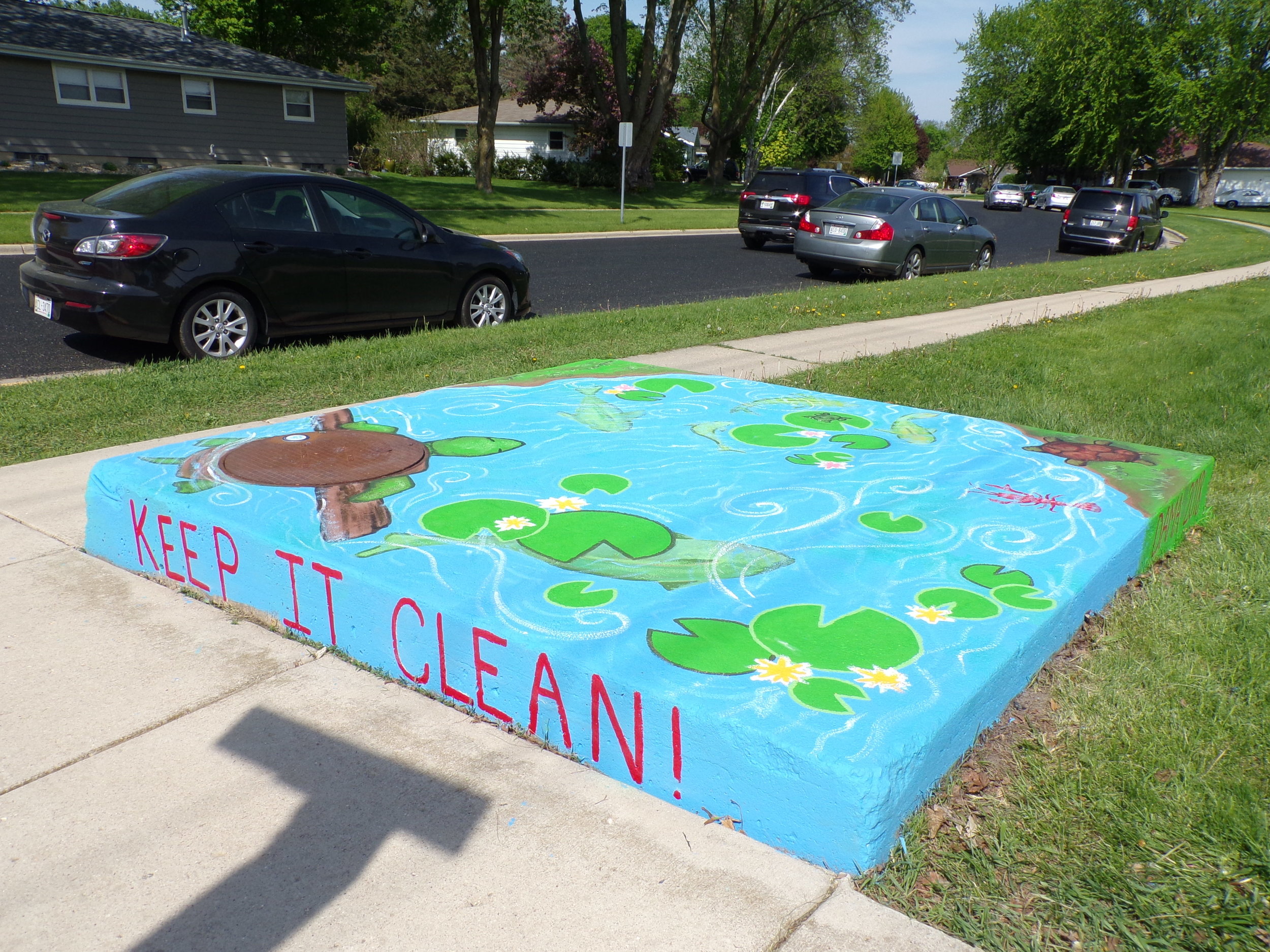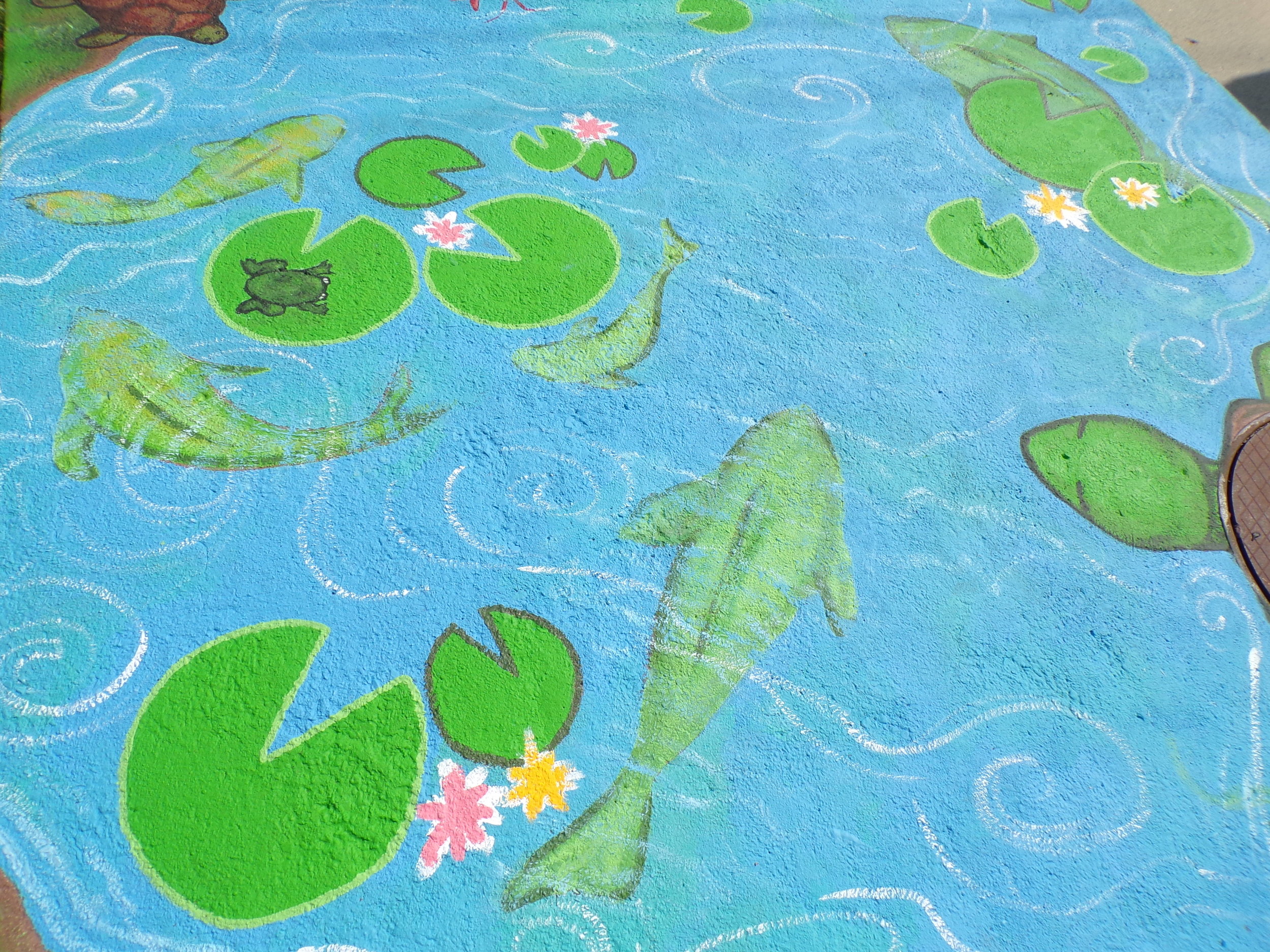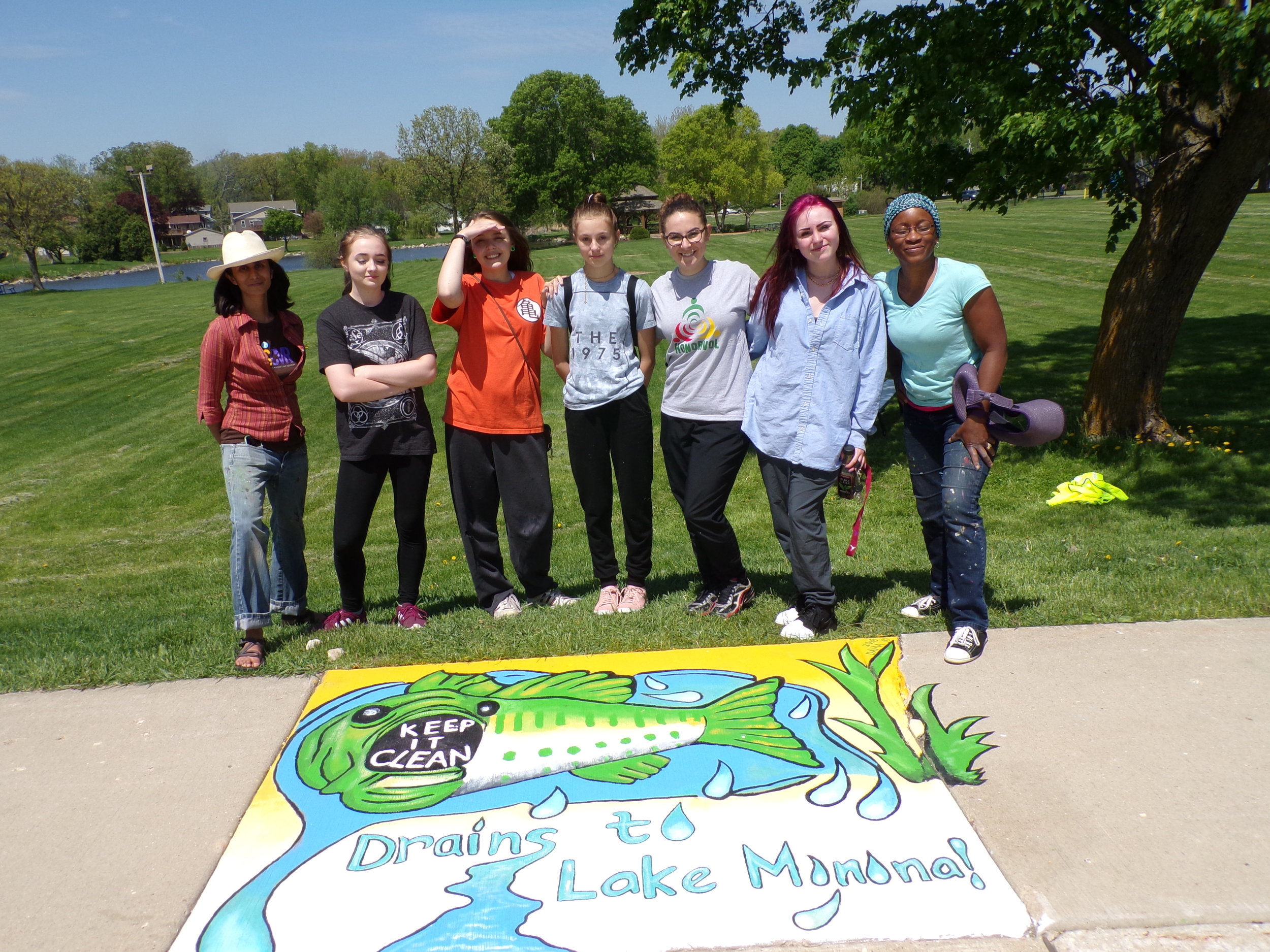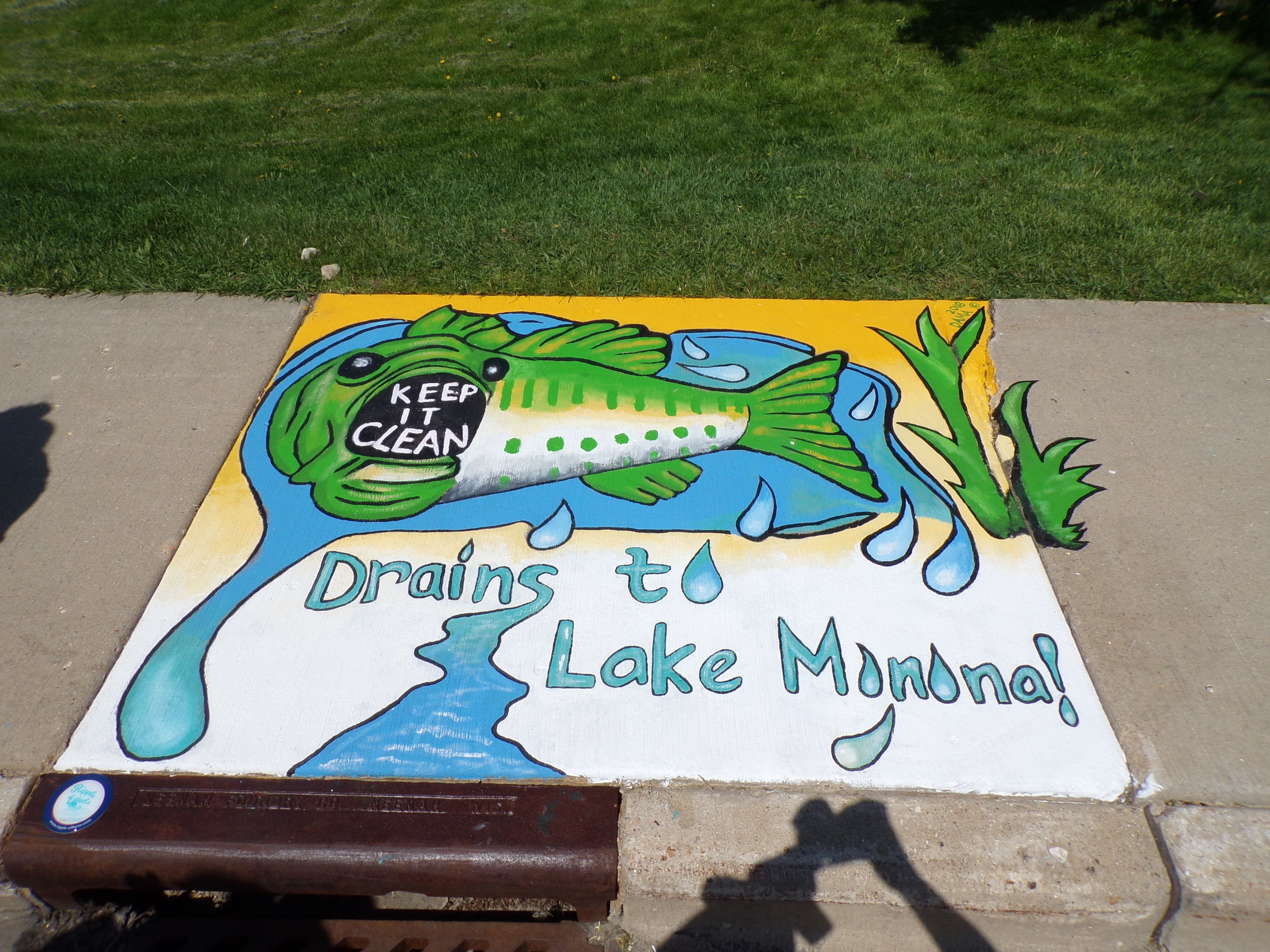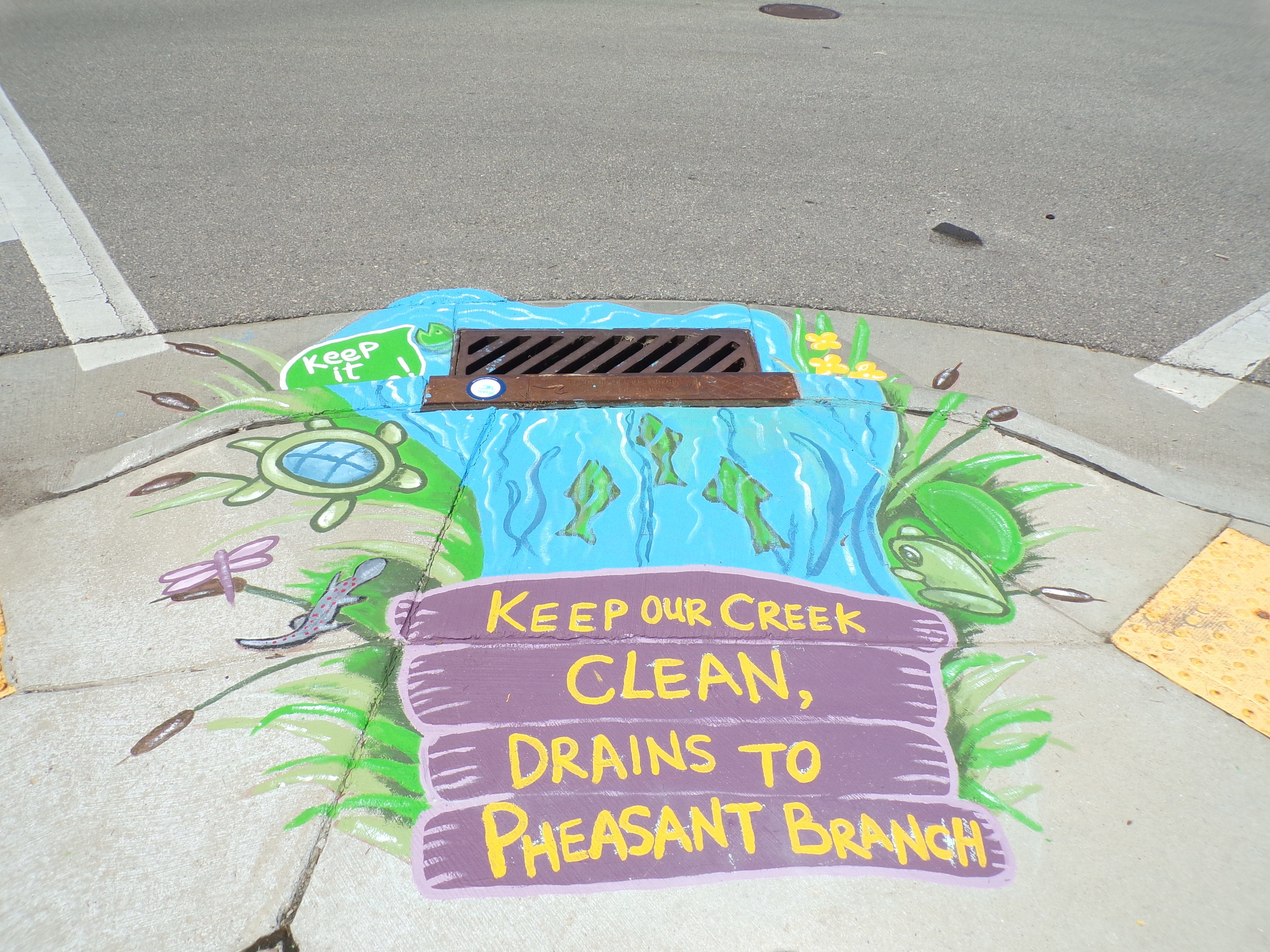When I was assigned to work with Dane Arts Mural Arts through my Service Learning Class at the University of Wisconsin-Madison I assumed that I would just be painting murals. But, I didn’t pick up a paintbrush the entire time. It’s not to say we weren’t doing art and definitely not to say we didn’t do anything with our time. Instead, I gained a look at some of the behind the scenes work required to pull off the elaborate murals this organization does and didn’t even realize how little ‘art’ I’d actually done until this moment. To say that I didn’t learn anything or that I did not enjoy it would be erroneous too; in fact, it has been a very fun and different experience from what I first expected.
While Dane Arts Mural Arts has their hand in many different projects all at once, the students from the UW were asked to focus mainly on the Storm Drain Mural Project. The Madison Area Municipal Stormwater Partnership and the Dane County Land and Water Resource Department funded this mural project in an effort to use art to educate people in Dane County that the water that goes into a storm drain flows directly into our lakes, rivers, and streams. This artful phenomenon has been popping up all over cities in America, and just takes a quick search online to see what an impact they have.
Out of the 20 storm drains the county cleared for this project, half of them would be ‘designed’ by kids at local schools. After a day of learning from the stormwater experts about the storm drains and how we can help the environment, we were off to the schools to work with the children. As someone who loves the environment, I was pretty happy with this project. We were working with elementary school all the way up to high school. Sometimes the younger children didn’t understand every detail or weren’t great at grasping the bigger words like ‘water treatment facility’ or ‘phosphorus’, which meant that we had to be able to think quick on our feet or learn for the next time which topics might go little over their heads.
After a short presentation, we asked each kid to draw what he or she would like to see on a storm drain. We would take these drawings and consolidate them into two or three designs. Some kids had thousands of ideas to draw and some kids not so much. I made an effort to try to sit by the kids that felt less sure about their drawing and help them develop ideas; just because they didn’t have the ability to draw it didn’t mean they had nothing to say. I recall at the end of one session, one of these girls hugged me after I’d spent time helping her.
We were careful to assure the kids their ideas would be well represented, but also remind them that it would be impossible to paint every idea on a little square of sidewalk. This project was never meant to be about picking the one best idea that a kid did and doing it right on the sidewalk, it was more about the group effort. At the point I’m writing this storm drains are finally being painted with help from the school kids. Designs needed to be approved by the city, schools need to be able to coordinate with us when they’re free, and lastly we need to pray that it doesn’t rain the day we want to paint. It showed me how long a process can take, but I still can’t wait to see the end results of all these storm drains.
--Lexie Brada, UW Service Learning class.
